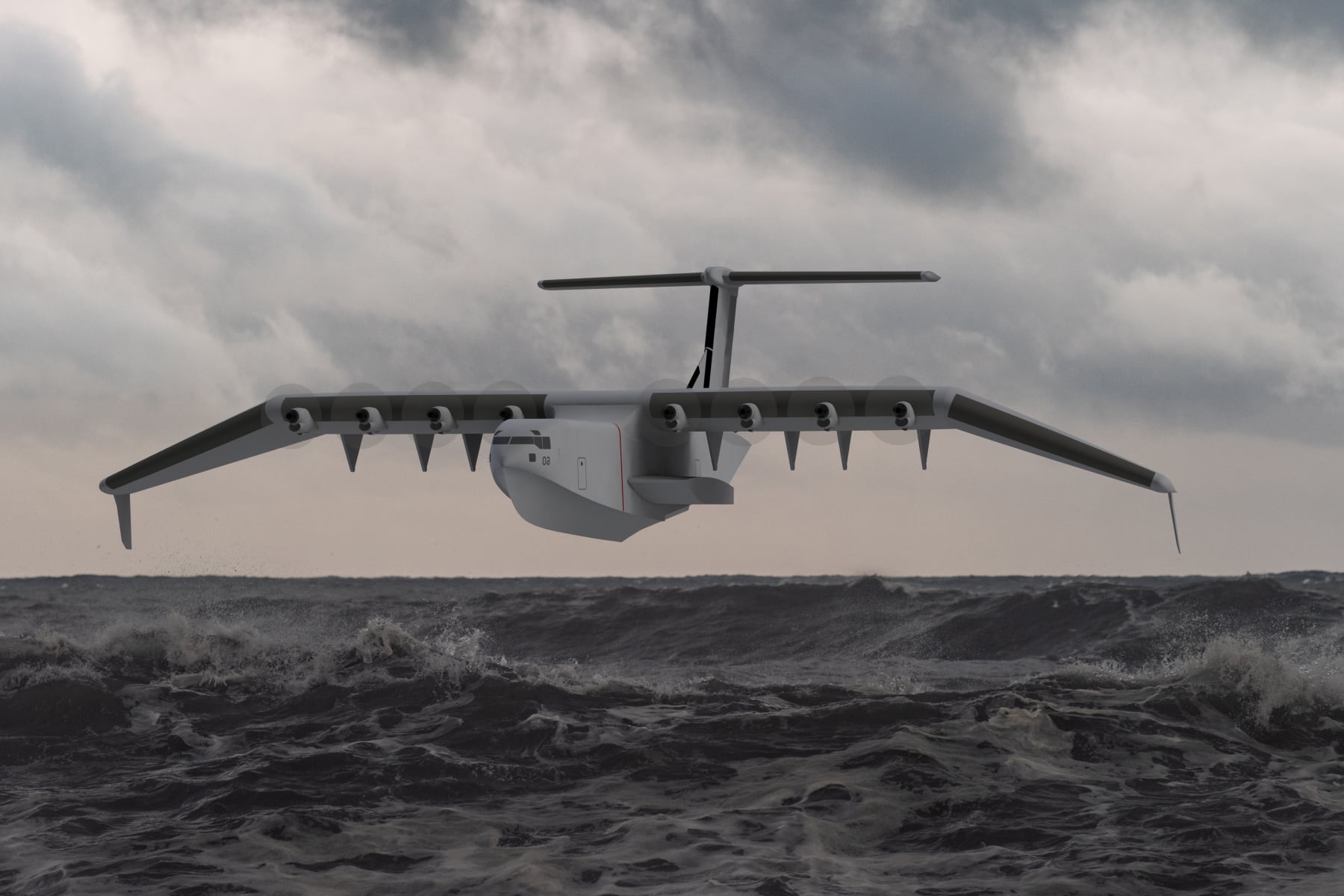WASHINGTON — The Defense Advanced Research Projects Agency has tapped two companies to design, and possibly build, an experimental seaplane that can transport large amounts of cargo on the water.
General Atomics and Aurora Flight Sciences, a subsidiary of Boeing, will develop their own competing designs for DARPA’s mobility seaplane program, DARPA said Wednesday. DARPA has dubbed this program the Liberty Lifter Seaplane Wing-in-Ground Effect, or Liberty Lifter for short.
DARPA wants this aircraft to be a long-range, low-cost aircraft around the same size and capacity as the C-17 Globemaster, which can carry more than 170,000 pounds of cargo, including a 69-ton M1 Abrams main battle tank, armored vehicles, trucks or trailers. The C-17 can also carry and airdrop 102 paratroopers and their gear, 34 patients on litters, or 54 ambulatory patients and their attendants.
And DARPA has set some ambitious goals for the Liberty Lifter’s sea capabilities.
The seaplane DARPA envisions would be more robust than some of the Navy’s in-water capabilities. Small boats, for example, are typically limited to so-called sea state 3 conditions, where waves are about four feet high. But the Liberty Lifter would be required to take off and land in sea state 4, which sees waves of up to about eight feet.
At sea state 5, where waves are considered rough and reach 13 feet, these planes would still be asked to sustain operations. Sea state 5 is the point at which conditions start to threaten the Navy’s ability to conduct resupply missions at sea between auxiliary ships and warships.
The Liberty Lifter also should be capable of extended flight close to the water, DARPA said.
DARPA is “looking forward to working closely with both performer teams as they mature their point of departure design concepts through Phase 1,” Christopher Kent, the agency’s program manager for the Liberty Lifter program, said in a statement. “The two teams have taken distinctly different design approaches that will enable us to explore a relatively large design space during Phase 1.”

DARPA’s interest in a cargo seaplane is the latest example of the military looking to adapt traditionally air-related capabilities to a maritime environment. The Pentagon is growing increasingly concerned about the possibility of a war with China, and a conflict in the Indo-Pacific region would require improved maritime capabilities.
In 2021, for example, the Air Force Research Laboratory tested a ship-killing GPS-guided Joint Direct Attack Munition specially modified to strike targets on the water.
Also that year, Air Force Special Operations Command announced it would develop a prototype amphibious version of special operators’ MC-130J Commando II, equipped with removable pontoons.
The two companies vying to create the Liberty Lifter took markedly different approaches, according to concept art DARPA released.
Aurora Flight Sciences, which is working with marine engineering company Gibbs & Cox and marine vessel design company ReconCraft, designed a more traditional “flying boat” aircraft, as DARPA called it. Aurora’s design has a single hull, high wings, wide horizontal stabilizers on its tail, and eight turboprops. Its wings would also angle down, though Aurora said they would not touch the water.
Aurora said its plane would be able to carry two Marine Corps amphibious combat vehicles, or six 20-foot container units.
General Atomics, along with naval engineering and design firm Maritime Applied Physics, proposed a twin-hull, mid-wing design, which DARPA said is intended to optimize its stability on water. It would have 12 turboshaft propeller engines. The art also shows stabilizers on its dual noses.
Instead of loading or unloading cargo from an aft door and ramp, as is the case for the C-17, General Atomics’ concept art shows its plane’s noses lifting up and vehicles deploying directly from the front, down the ramps to a beach.
DARPA in November awarded General Atomics an $8 million cost-plus-fixed-fee contract for the Liberty Lifter program, and General Atomics said its award has the potential to grow to up to $29 million. Aurora’s contract, which DARPA awarded Jan. 27, was for $5.7 million, and could grow to more than $25 million if all options are exercised.
These Phase 1 contract awards are for 18 months, including six months of conceptual design work and nine months of design maturation, ending in a preliminary design review. Three more months for manufacturing planning and test and demonstration planning reviews will follow.
During the program’s first phase, DARPA said it will work with the companies’ teams and other Defense Department organizations to refine the two designs, particularly to meet the military’s operational needs and operating concepts.
DARPA plans to start Phase 2 mid-2024, as more work to flesh out the design of the Liberty Lifter continues, as well as manufacturing and demonstration of a full-scale X-plane. DARPA expects to team up with at least one military service, as well as international partners, on Phase 2 as it works to further develop the concept into an operational vehicle.
DARPA last month announced it had selected Aurora to start designing another experimental airplane, that would use short bursts of air to maneuver instead of traditional ailerons or other mechanical devices, as part of the Control of Revolutionary Aircraft with Novel Effectors, or CRANE, program.
Megan Eckstein contributed to this report.
Stephen Losey is the air warfare reporter for Defense News. He previously covered leadership and personnel issues at Air Force Times, and the Pentagon, special operations and air warfare at Military.com. He has traveled to the Middle East to cover U.S. Air Force operations.





